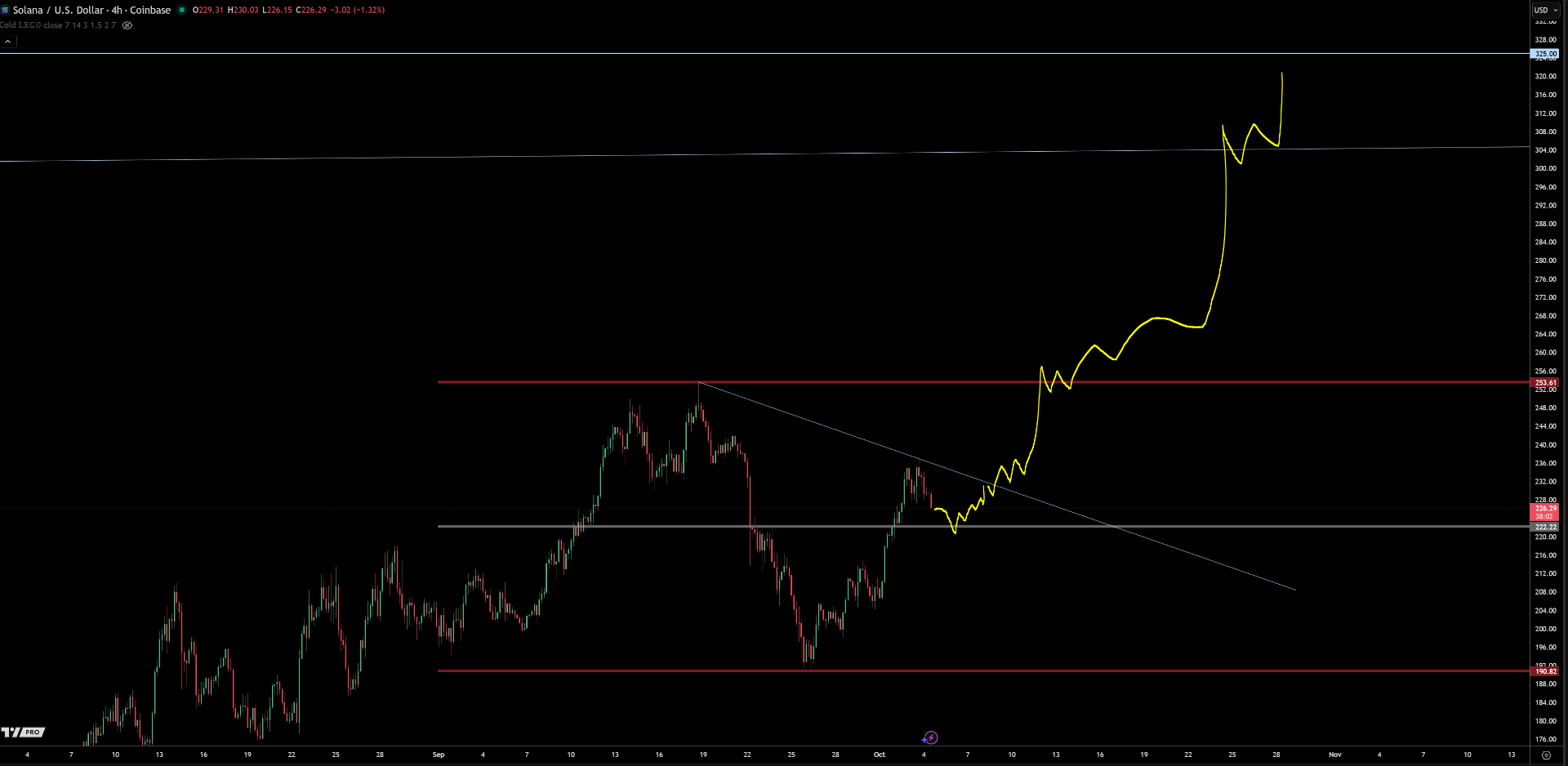TL;DR
- Bitwise CIO Matt Hougan calls Solana "the new Wall Street," citing its speed, throughput, and finality as key institutional advantages.
- He predicts substantial capital flows into Solana as stablecoins and tokenization take center stage in traditional finance.
- Hougan points to improvements in settlement speed-from ~400 microseconds down to ~150-as making SOL's infrastructure more intuitive to traders.
- He notes that figures at the SEC, Bank of England, and BlackRock are increasingly bullish on tokenization reshaping payments and securities markets.
- SOL's price action is consolidating in a narrow range, and traders are now eyeing breakout signals.
In a wide-ranging conversation with Akshay Rajan of Solana Labs on October 2 , Bitwise's Chief Investment Officer Matt Hougan offered a bold vision: that Solana is on track to become "the new Wall Street" of blockchain-based finance. The reasoning, he explained, lies in how the chain handles real-world asset tokenization, stablecoin mechanics, and institutional-grade infrastructure.
Hougan believes that the push toward stablecoins and tokenization is being echoed by leading institutions and regulators alike. Representatives from the SEC, the Bank of England, and even BlackRock have expressed that digital assets could transform payments, securities, and financial infrastructure. That vision, he said, resonates deeply with investors who understand the scale of the transition. Rather than viewing blockchains as speculative, they are asking: Which one is built for finance? Hougan argues Solana's architecture meets that standard.
Speed, Throughput & Finality: What Makes Solana Stand Out
One technical point Hougan emphasized was transaction settlement latency. He cited how Solana's settlement times have improved from roughly 400 microseconds down to around 150 microseconds, a shift that matters in markets where milliseconds count. For traders and institutions used to low-latency systems, that refinement is not just a detail-it's a differentiator.
When assessing blockchains, Hougan said, institutions weigh metrics that echo trading infrastructure: execution speed, reliability, and deterministic outcomes. Solana's combination of high throughput (i.e. ability to process many operations per second) and fast finality (i.e. certainty that a transaction is irreversible) places it in rare company.
By attacking both latency and reliability, Solana aligns with what many institutional actors expect from a financial rails protocol-not just a "crypto thing."
Technical Pullback & Market Behavior
SOL's recent price action reflects a phase of consolidation: trading between roughly $228.19 and $237.04, with resistance and support zones steadily forming.
Some traders are turning bullish. One pseudonymous account, "trader1sz," floated a target of $320 for SOL, projecting optimism amid tightening ranges.

If the narrative Hougan lays out gains traction, the alignment of capital, use cases, and infrastructure could drive momentum beyond technical patterns.
Risks & Context to Watch
Of course, Solana has strong competition. Ethereum still dominates in stablecoin volumes and developer ecosystems. Hougan's thesis depends on real-world asset adoption and institutional confidence.
Other considerations:
- Custody infrastructure: Institutions need secure, regulated custody for SOL and tokenized assets.
- Regulation & compliance: Tokenization across borders, securities status, and stablecoin rules are under intense scrutiny globally.
- Network resilience & scaling: High throughput is a strength, but it must remain reliable under heavy load.
That said, Hougan's framing shifts the narrative: this is no longer about which blockchain is fastest, but which one best bridges finance and crypto.
Final Thought
Bitwise's CIO laying down "Solana is the new Wall Street" may sound bold - and it is. But in a moment where stablecoins, tokenization, and institutional adoption are accelerating, the distinction is more than marketing. It's a bet on infrastructure, capital flows, and narrative convergence.
If Solana can align institutional demand with robust execution and compliance,Hougan's "new Wall Street" may not just be a label-it might become a reality.











